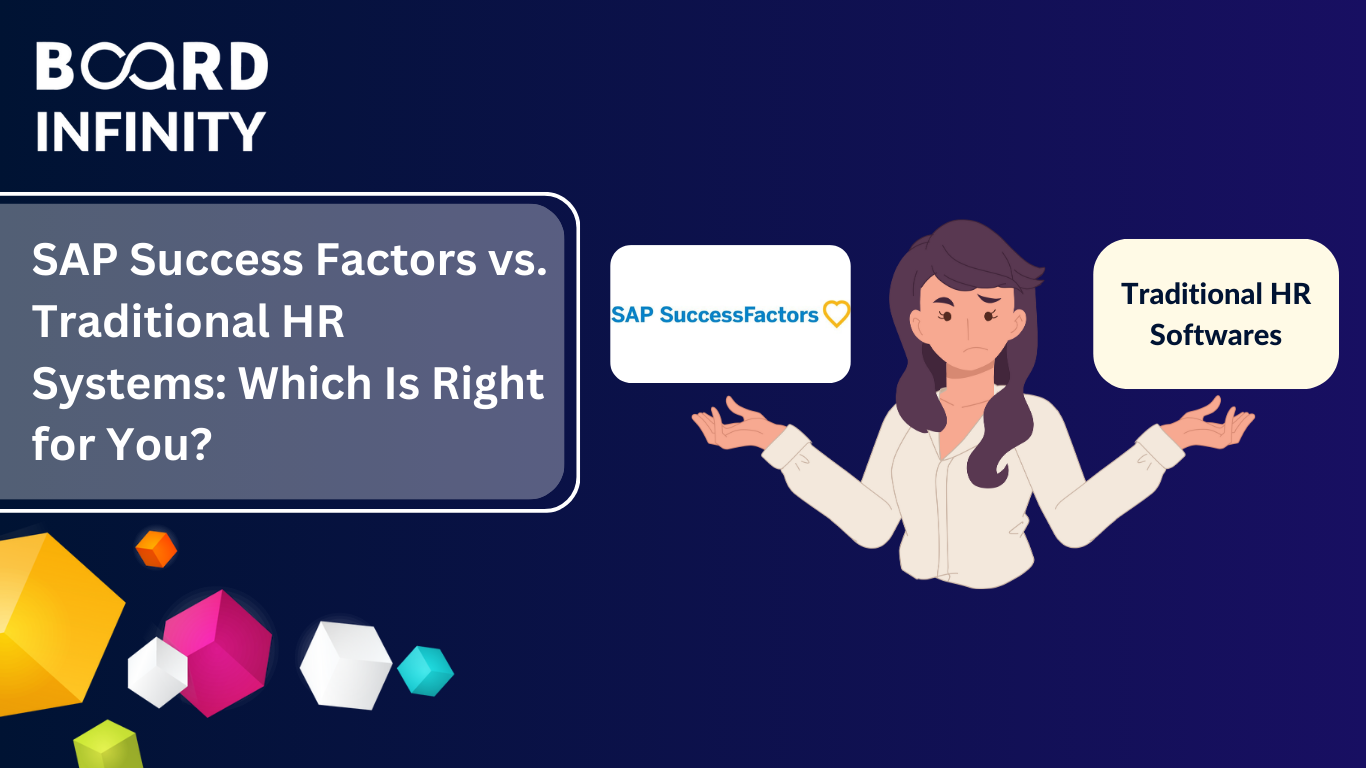
A human resources (HR) system is the foundation for a company’s workforce management and optimization. It automates and streamlines critical HR functions, such as hiring and onboarding, performance reviews, and payroll, resulting in greater efficiency and reduced administrative workload.
The system enables better decision-making through comprehensive employee performance, attendance, and engagement information. It also ensures compliance with labor laws and regulations, reducing legal risks.
A robust human resource development strategy is essential for fostering an organization's workforce in a way that not only hones their skills but also boosts their motivation and adaptability.
On top of that, a strong HR system promotes employee satisfaction and engagement by providing transparent communication, self-service facilities, and efficient performance management. Centralizing HR functions can help a company improve productivity, foster a positive work environment, and strategically align human capital management with organizational objectives.
Businesses must make a critical choice in the rapidly changing HR technology market: should they continue using traditional HR systems or embrace cutting-edge cloud-based alternatives like SAP SuccessFactors?
Both possibilities have their own pros and cons. In this blog, we will explore the SAP SuccessFactors and traditional HR systems, helping you make an informed decision based on your organization's unique needs.
Understanding SAP SuccessFactors
With Accely’s SAP SuccessFactors, you can manage all aspects of your human resources in the cloud. Whether it’s talent acquisition, performance management, or employee training and development, SAP SuccessFactors provides an integrated solution to help you streamline your HR processes and increase workforce productivity. The flexibility of SAP SuccessFactors allows businesses to adapt to the unique demands of various HR verticals, fostering a holistic approach to human resource management in the modern workplace.
Key Features:
- Unified Platform: SuccessFactors brings all your HR modules together in one easy-to-use platform, making it easier for users and ensuring consistent data across your organization.
- Real-time Analytics: The system offers robust HR analytics tools, allowing HR professionals to derive valuable insights from data, enabling informed decision-making.
- Employee Self-Service: SuccessFactors empowers employees by providing self-service tools, enabling them to manage their personal information, set performance goals, and access learning resources.
Advantages of SAP SuccessFactors:
- Scalability: With its scalability, SuccessFactors is perfect for businesses of any size. Whether you’re a start-up or a Fortune 500 company, SuccessFactors can accommodate your changing needs.
- Enhanced Collaboration: With SuccessFactors' cloud-based services, you can work with your team members in real time, fostering a more agile and connected workforce.
- Continuous Updates: SAP updates SuccessFactors on a regular basis, providing users with the most up-to-date features and security.
Exploring Traditional HR Systems
HR systems have been the foundation of human resources (HR) operations for decades, with most of them being on-premises solutions. These systems usually have separate modules for various HR functions, including payroll, T&A, and Recruitment.
Key Features:
- Customization: Traditional HR systems often offer a high degree of customization, allowing organizations to tailor the software to their specific requirements and processes.
- Control: On-premise solutions provide a sense of control over data, as it is stored within the organization's infrastructure. This can be appealing for businesses with stringent data security concerns.
- Legacy Integration: For companies with existing legacy systems, traditional HR solutions can integrate with them, minimizing disruptions during the transition.
Advantages of Traditional HR Systems:
- Data Control: Some organizations, particularly those in highly regulated sectors, like to have complete control of their HR data, and this is often where on-premises solutions come into play.
- Customization: Traditional systems allow for deep customization, ensuring the software aligns perfectly with the organization's unique processes and workflows.
- Legacy Integration: With traditional systems, you can customize the software as much as you want to ensure it fits perfectly with your organization’s specific processes and workflow.
Considerations for SAP SuccessFactors:
- Cost of Implementation: While the long-term advantages of SuccessFactors are clear, the upfront costs of implementation can be substantial. It is important for organizations to assess their financial constraints.
- Internet Dependency: Since SuccessFactors is a cloud-based platform, it requires an internet connection. If you operate in an area with poor internet connectivity, you may find it difficult to keep your system up and running at all times.
- Change Management: Migrating to a cloud-based system requires effective change management to ensure a smooth adoption process among employees.
Considerations for Traditional HR Systems:
- Upfront Costs: HR systems that are more traditional tend to have a high upfront cost for licenses and hardware, which can be prohibitive for smaller companies with tight budgets.
- Scalability Challenges: Some on-premises systems may not be able to handle large-scale deployments, making it difficult for growing businesses to adjust as their workforce grows.
- Maintenance Responsibilities: Organizations using legacy systems need to keep up with system upgrades, upkeep, and security procedures, which can be time-consuming and expensive.
Conclusion
Today, choosing the right SAP SuccessFactors over traditional HR systems requires careful consideration of your organization’s needs, budget, and long-term growth objectives.
SAP SuccessFactors stands out with advantages such as scalability, instant collaboration, and continuous enhancements. On the other hand, traditional HR systems provide a sense of autonomy, extensive customization options, and built-in legacy integration features.
In the end, it all comes down to your organization’s specific requirements and objectives. Whether you go with SAP SuccessFactors’ cutting-edge capabilities or stick with the tried-and-true HR systems. Making the right choice will set you up for a more streamlined and effective HR function within your organization.
